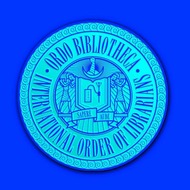
(View Complete Item Description)
This SALT Interpretation Pack has been designed as a resource for educators and students as they explore the themes of Hrair Sarkissian's "Istory" and Tayfun Serttaş's "Foto Galatasaray" exhibitions at SALT Beyoğlu and SALT Galata in Istanbul, Turkey. Designed for use in high school classrooms, its contents include activities, multimedia resources, terminology and opportunities for discussion. Educators are encouraged to adapt, shape and build upon these materials to best meet the needs of their students and teaching curricula.
The "Foto Galatasaray" project is based on the re-visualization of the complete professional archive of Maryam Şahinyan (Sivas, 1911 – Istanbul, 1996), who worked as a photographer at her studio in Galatasaray, Beyoğlu from 1935-1985. The archive is a unique inventory of the demographic transformations occurring on the socio-cultural map of Istanbul after the declaration of the Republic and the historical period it witnessed; it is also a chronological record of a female Istanbulite studio photographer’s professional career. Consisting entirely of black-and-white and glass negatives, the physical archive of Foto Galatasaray is a rare surviving example of the classical photography studios of Istanbul’s recent past. After Şahinyan left the studio in 1985, the archive was transferred to a storehouse belonging to Yetvart Tomasyan, owner of Aras Publishing. Twenty-five years later, approximately 200,000 negatives in the archive were, over the course of two years, sorted, cleaned, digitized, digitally restored, categorized and protected by a team under the direction of artist/researcher Tayfun Serttaş.
In 2010, Hrair Sarkissian spent two months in
İstanbul documenting the history sections of
various semi-private and public libraries and
archives in the city, from the Archaeological
Museum and Topkapı Palace libraries to the
Atatürk Library in Taksim, the Ottoman Archives
of the Prime Ministry General Directorate of State,
and the Ottoman Bank Archives and Research
Centre. The second exhibition in the "Modern Essays"
series, Sarkissian’s photographs of rows of shelving
caught in time and racks of files that appear rarely
opened - of dark and oppressive spaces shot with
only the light available - express the complexity
of information these archives contain, and their
role in denying or confirming the artist’s inherited
history and existence within the present.
Material Type:
Activity/Lab,
Homework/Assignment,
Lesson Plan




















